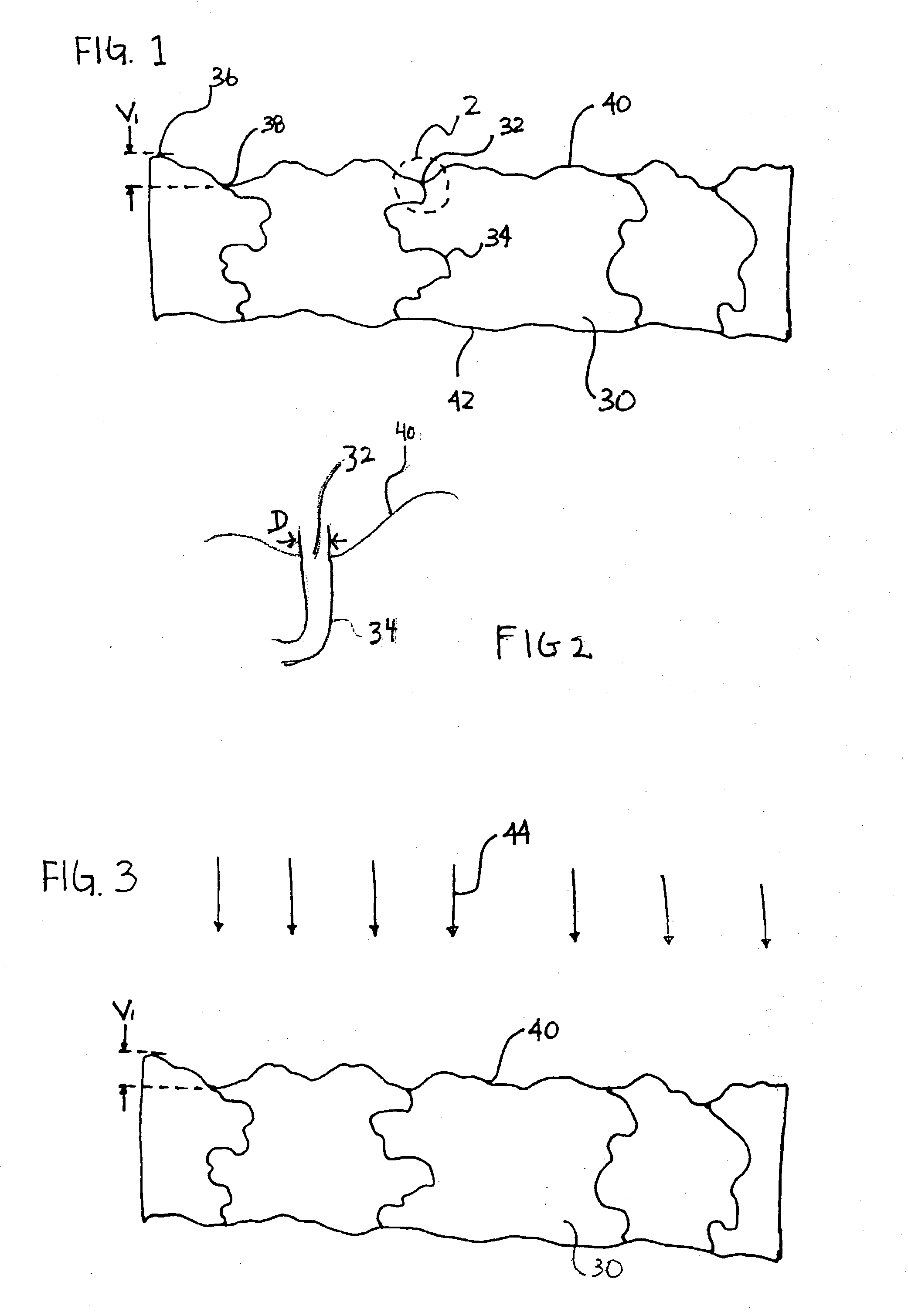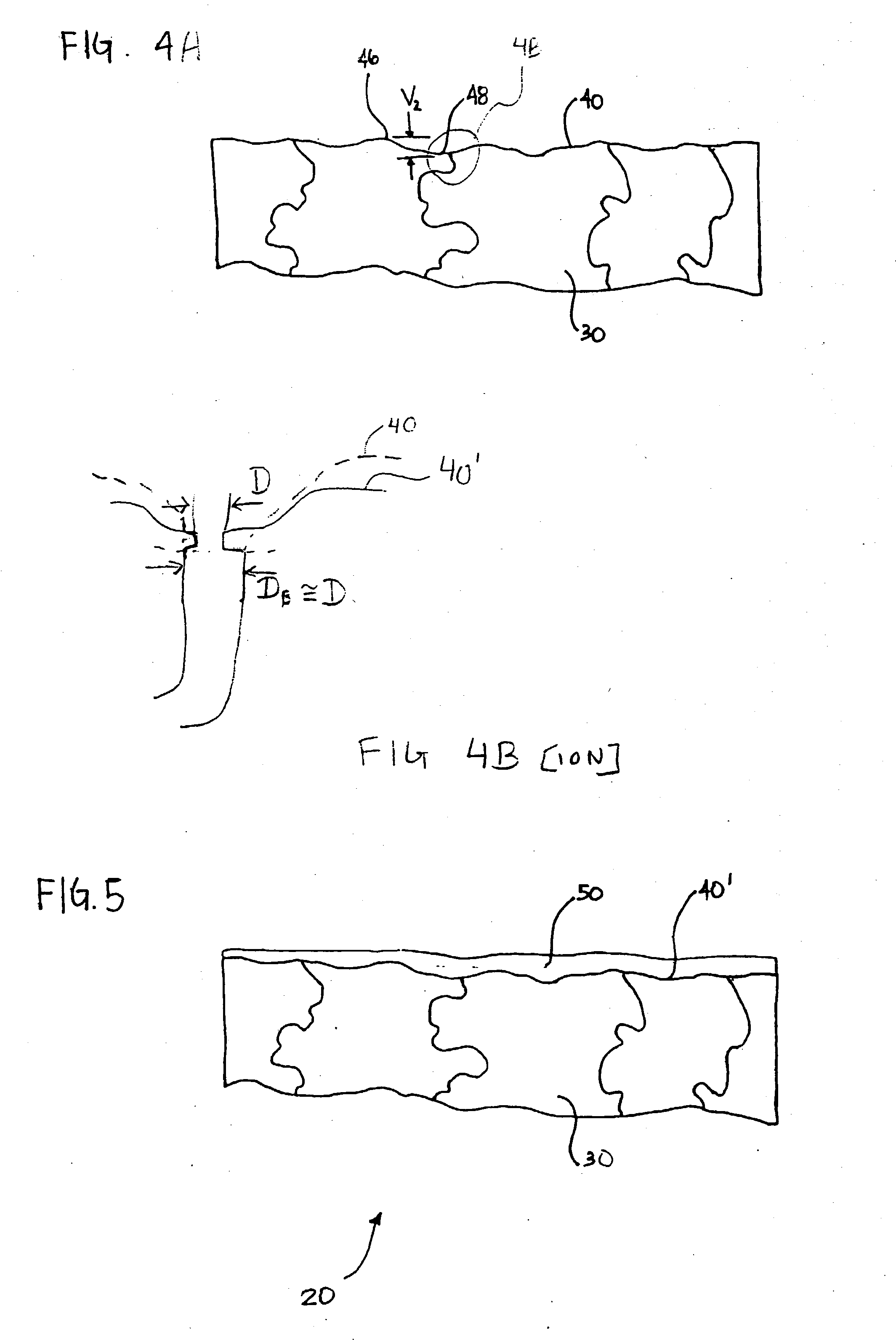Surface modification of porous metal substrates
- Summary
- Abstract
- Description
- Claims
- Application Information
AI Technical Summary
Problems solved by technology
Method used
Image
Examples
Embodiment Construction
[0046] FIG. 6 shows an scanning electron microscopy ("SEM") picture of an untreated stainless steel porous metal substrate 30 with an average pore size diameter D of 20 microns and a porosity of about 46 percent. FIG. 7 shows an SEM picture of the same metal substrate 30 shown in FIG. 6 after pulse ion beam treatment, and FIG. 8 shows an SEM picture of the same metal substrate 30 shown in FIG. 6 after shot peening. Shot peening does not yield a metal substrate 30 with as smooth a surface as the ion beam treated metal substrate 30 shown in FIG. 7. The shot peened surface appears more pitted and rough when compared to the untreated metal substrate 30 of FIG. 6. The SEM picture in FIG. 7 of the pulse ion beam treated metal substrate 30 shows that this treatment resulted in a relatively smooth surface.
[0047] Although the invention has been described and illustrated with reference to specific illustrative embodiments thereof, it is not intended that the invention be limited to those illu...
PUM
| Property | Measurement | Unit |
|---|---|---|
| Fraction | aaaaa | aaaaa |
| Pore size | aaaaa | aaaaa |
| Pore size | aaaaa | aaaaa |
Abstract
Description
Claims
Application Information
 Login to View More
Login to View More - R&D Engineer
- R&D Manager
- IP Professional
- Industry Leading Data Capabilities
- Powerful AI technology
- Patent DNA Extraction
Browse by: Latest US Patents, China's latest patents, Technical Efficacy Thesaurus, Application Domain, Technology Topic, Popular Technical Reports.
© 2024 PatSnap. All rights reserved.Legal|Privacy policy|Modern Slavery Act Transparency Statement|Sitemap|About US| Contact US: help@patsnap.com









